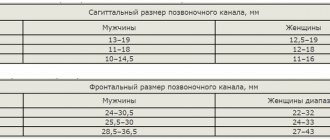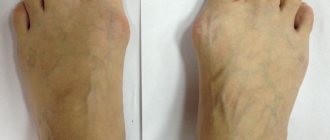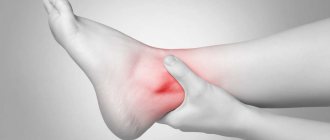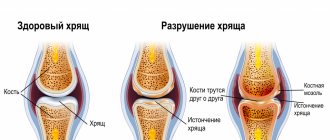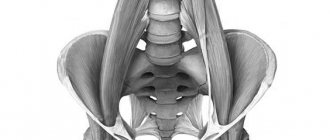Rheumatism in children
Rheumatism is diagnosed in school-age children more often than in other age groups. The first attack of the disease generally has an acute onset, the temperature rises to febrile levels, and intoxication occurs. 2-3 weeks before this, almost all patients suffer from upper respiratory tract disease. Along with a rise in temperature, signs of polyarthritis or arthralgia appear.
The following symptoms are typical for rheumatic arthritis:
- pain in the joints with dysfunction, of a volatile nature
- unstable, treatable damage to medium and large joints
In the acute period of the disease, most children show signs of heart damage, which is the main criterion for diagnosis. Myocarditis is the most common manifestation of cardiac pathology in this disease. With rheumatic myocarditis, the following symptoms appear:
- deterioration of general condition
- pale skin
- expanding the boundaries of the heart
- dullness of tones (may be bifurcated)
- tachycardia or bradycardia
- signs of circulatory failure (in some cases)
Most often, the symptoms are not pronounced. Today the trend is as follows: moderate changes are observed in the myocardium, the general condition is almost unchanged. In more than half of the cases, endocarditis (damage to the valvular apparatus of the heart) is detected in the acute period. In rare cases, during the first attack of rheumatism, both valves may be affected: the mitral and aortic. The pericardium is rarely involved in the pathological process. In an acute, hyperergic course, symptoms of pericarditis may occur, while the general condition of the child worsens.
In addition to the heart, rheumatism in children can damage other organs. In recent years, anular erythema and abdominal syndrome at the height of the disease have rarely been observed. If the nervous system is affected, minor chorea most often occurs. Parents notice that the child is irritable, uncollected, and there are involuntary movements (more or less pronounced).
The following symptoms are typical for relapses of rheumatism::
- the attack begins sharply
- the symptoms are almost the same as the first attack
- the leading pathology is the heart
Mitral valve insufficiency is a defect characterized by the presence of a blowing systolic murmur at the apex. The noise acquires a hard timbre in some cases if the deficiency is severe. After load, the noise usually becomes louder. The pressure remains normal.
Mitral stenosis of an isolated type occurs in rare cases, mainly with a sluggish or latent course of rheumatism in children. It is characterized by the following signs: flapping first sound, rumbling presystolic murmur, mitral click. More often, mitral valve stenosis occurs against the background of already formed mitral valve insufficiency.
Aortic valve insufficiency in rheumatism is characterized by the fact that a pouring diastolic murmur is heard, which immediately follows the second sound and is best heard along the sternum on the left. The borders of the heart are expanded to the left. There may be symptoms such as “carotid dancing”, pallor, increased pulse pressure in children. But these symptoms are not characteristic of the initial stage of the disease.
Aortic stenosis as an acquired defect is most often associated with aortic valve insufficiency. In the second intercostal space on the right, a rather rough systolic murmur is heard with a maximum in mid-systole.
Other acquired heart defects in children occur in very rare cases.
Rheumatism (acute rheumatic fever) - symptoms and treatment
The main, and in most cases, the only manifestation of rheumatism is heart damage caused by inflammation - rheumatic carditis (carditis). With rheumatic carditis, simultaneous damage to the myocardium and endocardium occurs. This is the main syndrome that determines the severity and outcome of the disease.
In the case of carditis, adult patients experience discomfort in the heart area, interruptions in heart rhythm, and rapid heartbeat. There may be mild shortness of breath on exertion [4][5][7]. In children, this pathology is more severe: the disease begins with palpitations, shortness of breath at rest and during exercise, and constant pain in the heart area [7]. However, according to the observations of most pediatricians, children rarely present subjective complaints. Only 4-5% of pediatric patients report discomfort in the heart area at the onset of the disease. But about 12% of patients complain of tiredness and tiredness, especially after school [2][10].
With ARF, it is possible to develop rheumatic arthritis , which affects the musculoskeletal system. This is the second most common clinical manifestation of ARF. The prevalence of rheumatic arthritis varies according to various sources from 60 to 100% [3]. Patients complain of pain in large joints, inability to move, and enlargement of joints [4]. Polyarthritis can occur alone or in combination with another syndrome, most often with carditis. A feature of the disease is rapid and complete reverse development with timely administration of antirheumatic therapy.
Rheumatic lesions of the nervous system occur mainly in children. It is worth noting such a disease as “minor chorea”, or rheumatic chorea (Sydenham’s chorea, St. Vitus’s dance). It is manifested by emotional instability and violent, erratic, involuntary movements (hyperkinesis) of the upper torso, upper limbs and facial muscles [1][2].
Rheumatic chorea occurs in 12-17% of children; girls aged 6 to 15 years are more often affected [11]. The onset is gradual: patients experience tearfulness, irritability, twitching of the muscles of the trunk, limbs, and face. They complain of unsteady gait and impaired handwriting. The duration of chorea is from 3 to 6 months. It usually ends with recovery, but in some patients an asthenic state (increased fatigue, mood instability, sleep disturbance), decreased muscle tone, and slurred speech persist for a long time [1][2].
Ring-shaped erythema is a rare but specific clinical manifestation of ARF. It appears during the period of greatest activity of the process in approximately 7-17% of children. Ring-shaped erythema is a non-pruritic, pale pink rash. It does not rise above the skin level and appears on the legs, stomach, neck, and inner surface of the arms. The elements of the rash look like a thin rim that disappears when pressed. The diameter of the elements ranges from a few millimeters to the width of a child’s palm.
Subcutaneous rheumatic nodules are also a rare sign of ARF. These are round, dense, painless formations, varying in size from 2 mm to 1-2 cm. They are formed in places of bony protrusions (along the spinous processes of the vertebrae, the edges of the shoulder blades) or along the tendons (usually in the ankle joints). Sometimes they appear as clusters consisting of several nodules. Often combined with severe carditis.
Additional clinical manifestations of ARF include abdominal syndrome (acute abdominal pain) and polyserositis - inflammation of the serous membranes of several body cavities (pleura, pericardium, peritoneum, etc.). These syndromes develop in children against the background of high inflammatory activity. Abdominal syndrome, caused by peritonitis (inflammation of the peritoneum), is manifested by acute diffuse pain in the abdomen, sometimes accompanied by nausea and vomiting, bloating, stool and gas retention.
pleurisy (inflammation of the serous membrane covering the surface of the lungs) may develop Pleurisy can be dry or exudative. Dry pleurisy is an inflammation of the pleural layers with the formation of fibrin on them. Exudative - inflammation accompanied by the accumulation of exudate of various types in the pleural cavity. With ARF, dry pleurisy is more often observed. Currently, this manifestation of ARF is rarely observed. It may be clinically asymptomatic or accompanied by pain during breathing, dry cough, and sometimes a pleural friction noise is heard [5][6][7].
Causes
The development of the disease is caused by the excessive activity of streptococcus A of the hemolytic type. It is this that contributes to the occurrence of childhood rheumatism. The enzymes released by this type of bacteria are very toxic. Moreover, they directly affect the heart tissue.
But this is not the main cause of rheumatism in children. The thing is that, in addition to their toxicity, such microorganisms are distinguished by an antigenic substance, which is quite similar to the heart. For this reason, the child’s body’s defense reactions are directed towards the heart, confusing its tissue with an infectious agent.
These are the main causes of rheumatism in children aged 7-15 years and younger.
Why is it dangerous?
In case of severe, protracted or recurrent course of the disease, the patient may develop complications of rheumatism. As a rule, they manifest themselves in the form of impaired cardiovascular function. These are atrial fibrillation, circulatory failure, myocardiosclerosis, heart defects, etc. The result can be thromboembolism of various organs, cavity adhesions of the pleura or pericardium. With thromboembolism of the main vessel or decompensated heart muscle defect, death is possible.
Diagnosis of rheumatism
The diagnosis of “rheumatism” is established after a thorough examination of the child by a doctor, as well as a series of laboratory and instrumental studies. During the physical examination, special attention is paid to auscultation and percussion of the heart, which is necessary for the early detection of heart defects, which often form with rheumatism.
The following laboratory diagnostic methods are used:
- A general blood test reveals an increase in the number of leukocytes and an acceleration of ESR.
- A biochemical blood test, where an increase in the level of globulins, C-reactive protein, and antistreptococcal antibodies (ASLO) speaks in favor of the disease.
- Bacterial culture from the throat, which reveals streptococcus.
The following instrumental diagnostic methods are used:
- ECG (electrocardiography), which detects disturbances in the rhythm and conduction of the heart.
- Echocardiography (ultrasound of the heart) - dilation of the heart chambers and signs of valvular insufficiency can be determined.
- X-ray of the heart, which visualizes the increased size of the organ.
Consequences of rheumatism
The prognosis for this disease depends on whether a heart defect has formed. During a primary episode of rheumatic carditis, it develops in about 25% of children, but with a repeated episode, the risk of developing valve damage increases significantly. The prognosis also depends on whether timely and complete treatment was carried out when the disease was first detected.
The main complications that can occur with this disease are the following:
- formation of heart disease;
- development of chronic heart failure;
- heart rhythm disturbance.
Treatment methods for rheumatism
Treatment of this disease is always complex and consists of successive stages: the first of them is hospitalization and treatment in a hospital, then follow-up treatment occurs in a cardio-rheumatology sanatorium, after which the child is observed by a cardio-rheumatologist at the place of residence.
Drug treatment consists of prescribing an antibacterial drug that acts directly on streptococcus, the use of non-steroidal and steroidal (hormonal) anti-inflammatory drugs, antihistamines and vitamin therapy.
How to treat?
Since the disease is systemic in nature, treatment of rheumatism is carried out under the strict supervision of medical specialists. As a rule, complex therapy is used, the main goals of which are to suppress infection, stop the inflammatory process and prevent or treat cardiovascular pathologies. The therapy consists of three stages.
- Hospital treatment. It includes drug therapy - taking non-steroidal anti-inflammatory drugs, antibiotic therapy, and other prescriptions depending on the symptoms. If necessary, to eliminate the source of chronic infection, tonsils can be removed, but not earlier than 2-3 months after the onset of the disease. In addition, the patient is prescribed nutritional therapy and exercise therapy. Special diets for rheumatism involve split meals (at least 5-6 meals a day), a high protein content and a minimum of carbohydrates, fresh and processed vegetables. Protein foods are mainly fish, eggs and dairy products.
- Cardio-rheumatic sanatorium. The therapy started in the hospital continues, dosed physical activity, walks, hardening and restorative physical procedures, and dietary nutrition are added to it.
- Dispensary observation. At this stage, the goal of treatment efforts is preventive measures to prevent relapses and stop the process.
Timely detection and adequate therapy, as a rule, lead to complete recovery of patients.
Types of rheumatism
The disease is classified according to various parameters. Depending on the clinical variant, acute rheumatic fever and repeated rheumatic fever are distinguished.
Depending on the location of the manifestations, the following types of disease are distinguished:
- Rheumatism of the heart: rheumatic carditis (primary, without heart disease (recurrent) or with heart disease).
- Rheumatism of other organs and systems: rheumatism of the joints with the development of polyarthritis, polyarthralgia;
- rheumatism of the nervous system: chorea minor, encephalitis, cerebral vasculitis;
- serositis (abdominal syndrome, etc.);
- skin rheumatism: ring-shaped erythema, rheumatic nodules;
- rheumatic pneumonia;
- hepatitis;
- nephritis;
- iritis, iridocyclitis;
- thyroiditis.
The following types of rheumatism are distinguished:
- Acute - rapid and rapid development of symptoms.
- Subacute - characterized by a gradual onset and moderate activity; the most common flow variant.
- Protracted - gradual onset, minimal activity, but can persist for a long time without pronounced dynamics.
- Continuously relapsing - a severe, so-called torpid course, when a relapse of the disease occurs before the previous relapse becomes inactive.
- Latent - hidden, low-symptomatic course.
Causes of rheumatism
The disease most often occurs as a result of a previous sore throat, the causative agent of which was β (beta)-hemolytic streptococcus of group A. The first signs of rheumatism usually appear 1–3 weeks after the streptococcal infection.
When studying the mechanism of development of pathology, several concepts are distinguished. The toxic mechanism is associated with the direct effect of streptococcal toxins on the cells and tissues of the body, which causes a number of changes in the latter. In addition to the direct effect of streptococcus itself on the body, there are mechanisms for the development of rheumatism associated with autoimmune reactions, as well as with the characteristics of the immune response, both cellular and humoral, to streptococcal antigens.
Also, minor provoking external factors that reduce a child’s resistance to infection can be considered hypothermia, physical fatigue, and stress.




